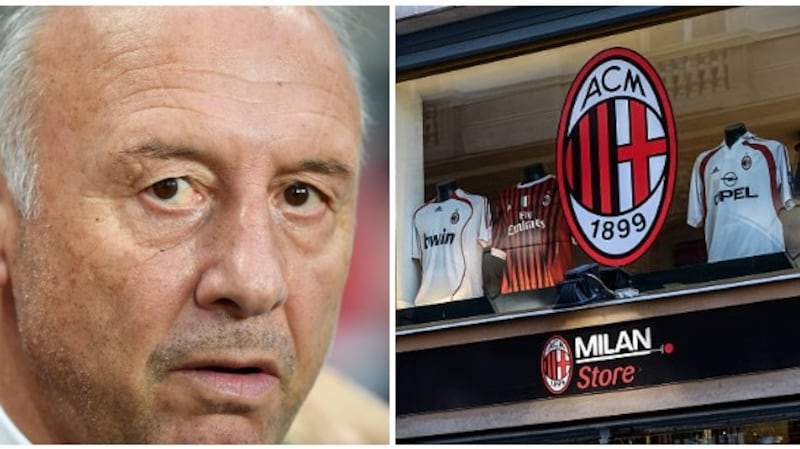Walking down Richmond Road last Friday towards a sold-out Tolka Park to watch Shelbourne vs St Patrick's Athletic was a brilliant buzz. There was a palpable sense of anticipation for the season ahead from both sets of supporters.
Inside the ground, Damien Duff kicked off his senior management career with the home side playing a 3-4-2-1 system. It's the same set up that Shamrock Rovers have used to generate so much on-field success in the last two years with Stephen Bradley being a strong advocate of its benefits.
Vera Pauw
We've also seen three at the back become the staple formation for our senior international teams, both men and women, with Stephen Kenny abandoning the 4-3-3 which brought him so much success at Dundalk. Kenny now favours the newer formation while Vera Pauw has also used it to positive effect in Ireland's current world cup qualifying campaign.
In the last couple of weeks, we also saw Chelsea use the 3-4-2-1/3-4-3 to good effect at the Fifa Club World Cup and although their manager Thomas Tuchel is not averse to using a back four, there is no denying it is his favoured playing system.
Having played with four against Crystal Palace last weekend, he reverted to the three centre halves for Tuesday's 2-0 victory over Lille in the Champions League.
Playing with three at the back was something I first encountered during my time with Northern Ireland when a rich pool of centre-back talent was the motivation for adopting the system. It was about getting the best players on the pitch in their best positions.
I discovered recently that an abundance of forward talent was the reason behind the creation of the system in the first place. During the Club World Cup, I had the incredible opportunity to work alongside Alberto Zaccheroni, a fantastic football mind and gentleman of the highest order. Zaccheroni is credited with first playing the 3-4-3/3-4-1-2 system and it was fascinating to get his insights and reasons for doing so during his managerial career in Italy as far back as 1995.

As Udinese manager, the club qualified for the Uefa Cup for the first time. He told me that he used the system to ensure that his best players, who were all forwards and match winners, were on the pitch together.
It allowed Paolo Poggi and Marcio Amoroso dos Santos to start alongside Oliver Bierhoff. He first imposed it in the 1996-97 season when his team were reduced to 10 men after 50 seconds in a game against AC Milan after an early red card for one of his defenders. He had originally set up as a 4-4-2, but instead of taking off a striker and putting on a defender to go 4-4-1, as would have been the norm, he stuck with three defenders and went 3-4-2.
It took everyone by surprise, especially when Udinese won 3-0. He said the players were smiling the following week when he named the team as a 3-4-3 to face Parma, a game they won 2-0.
It became their system, eventually propelling Udinese to a third-place finish in Serie A, behind champions Juventus and Inter Milan.
Bierhoff scored 27 goals that season, a return that prompted AC Milan owner Silvio Berlusconi to come calling. Zaccheroni was appointed as manager while Bierhoff and Thomas Helveg were signed by the Rossoneri.
Milan, with the likes of Paolo Maldini and Alessandro Costacurta in defence, and Leonardo, Bierhoff and George Weah in attack went on a brilliant run because the teams playing against them "had never seen it and just didn't know what to do".
Zaccheroni became known as the Godfather of 3-4-3 and in his first season at Milan they captured the Scudetto after winning their last seven games.
Zaccheroni’s theory revolved around his forwards not doing too much defending. So he kept a spare midfielder, the “1” in the 3-4-1-2, which gave him an extra man in the middle against a traditional 4-4-2.
Antonio Conte
He was also happy to have one extra defender against the opposition’s two forwards, which meant his team could become a truly potent attacking entity.
It’s a system that inspired Antonio Conte and it’s fascinating to see how it has been adapted, particularly when you watch how Chelsea use it, to create a forward line of five players by pushing their wing backs high up to flank the attacking three.
The birth of the 4-3-3 inevitably followed, as something was needed to counteract the spare midfielder whilst keeping three up front. A back four, therefore, was required to keep the spare defender against a front three.
That was the system that inspired the Ajax and Dutch models, and also the Belgian model implemented by Michel Sablon, the man who is credited with bringing them from 50th in the world to number one.
Could the 3-4-3/3-4-2-1 be the system that inspires Irish football to race up the rankings?
We are about to find out.












